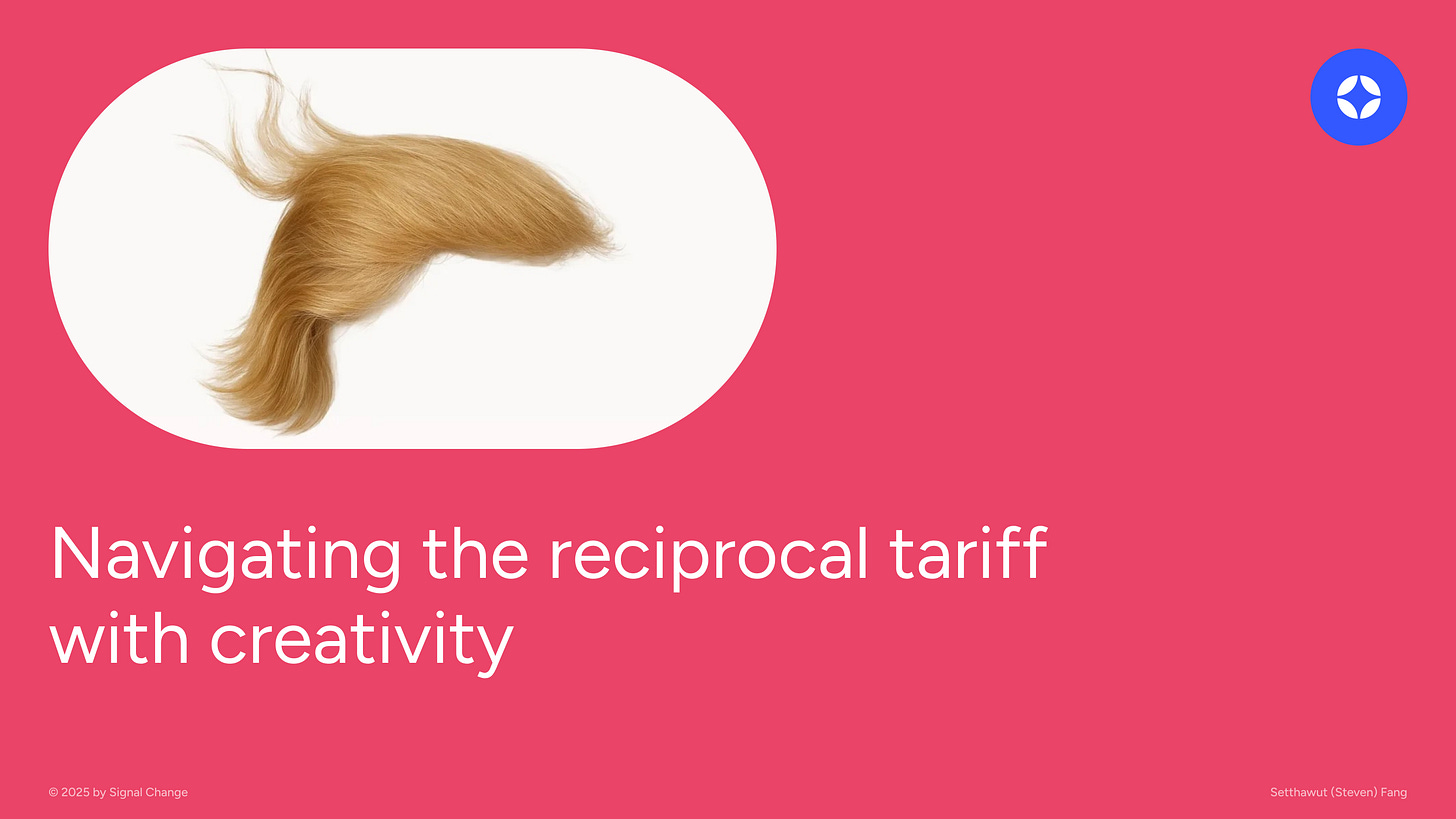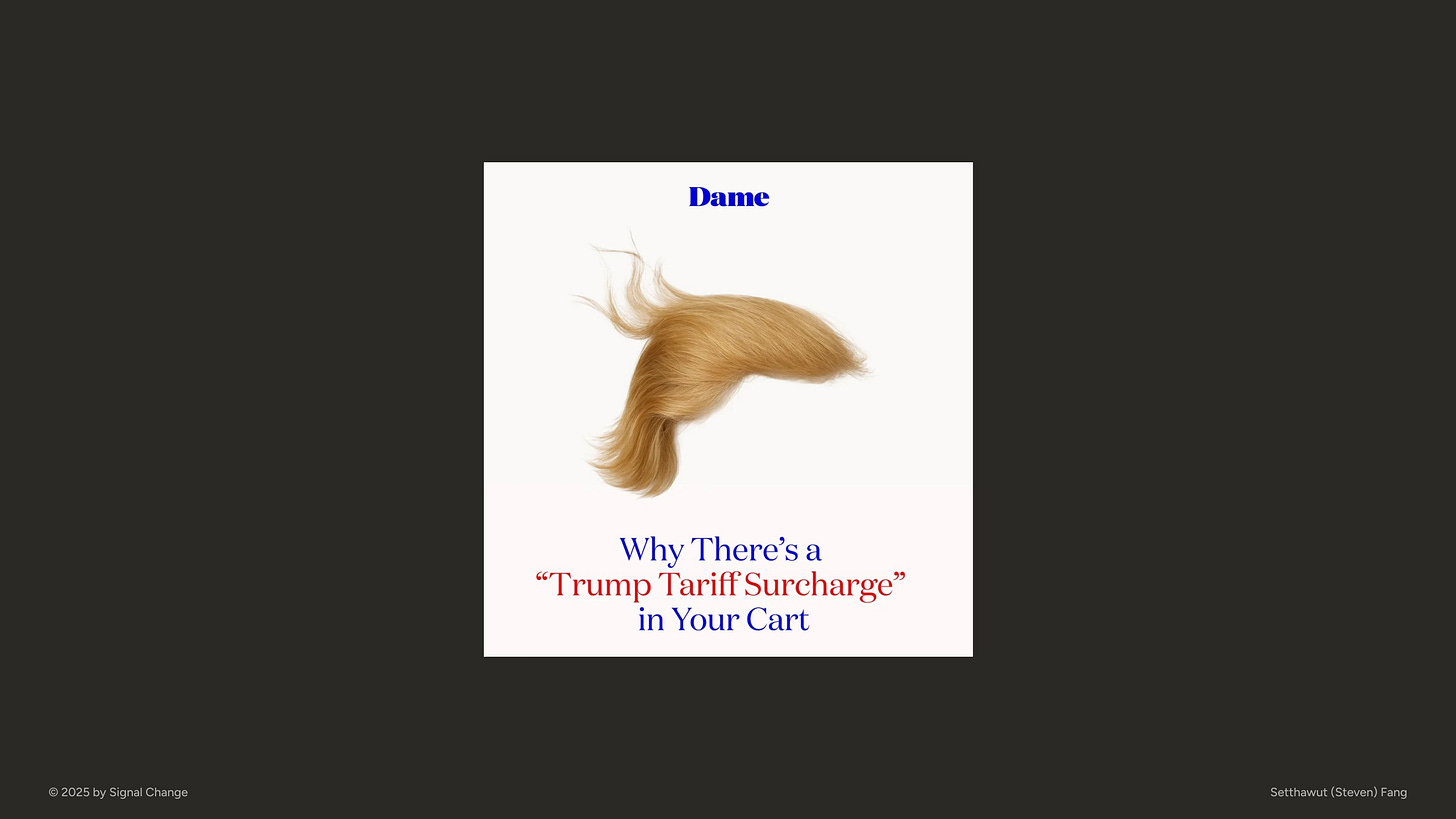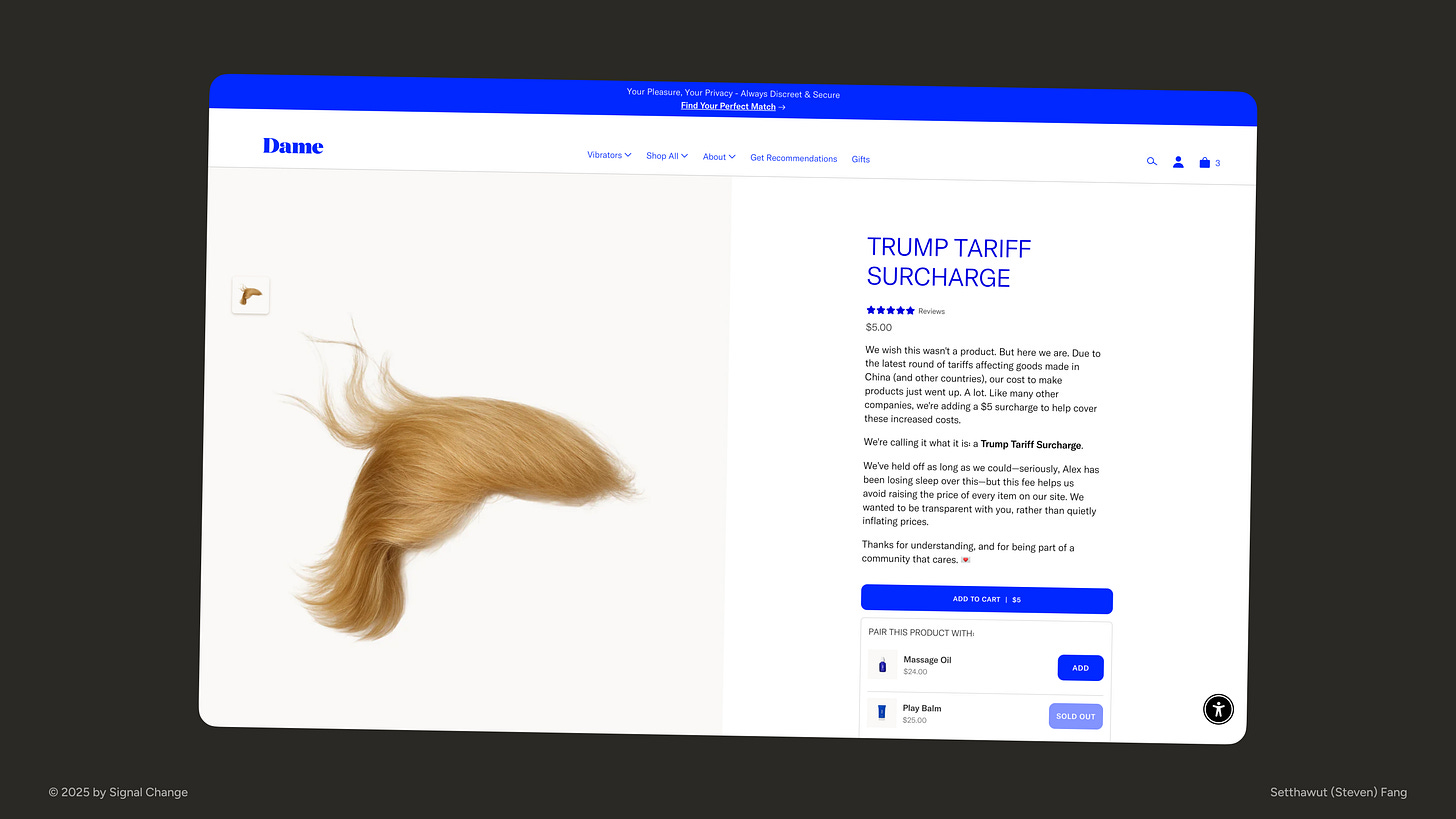Navigating the reciprocal tariff with creativity
How thoughtful communication can minimize its impact for businesses and brands
As global trade tensions rise once again with U.S. President Donald Trump’s announcement of reciprocal tariffs, many businesses are bracing for a new wave of uncertainty. While positioned as a way to level the playing field, the move adds further complexity to an already fragile global economy.
For businesses, especially smaller firms with international supply chains, the ripple effect is clear: higher import costs, tighter margins, and difficult decisions. These companies are already grappling with inflation, shifting consumer behaviors, and post-pandemic recovery. Now, they face a tough choice: absorb the rising costs and take a financial hit, or raise prices and risk alienating cost-sensitive customers.
But amidst the gloom, one company chose an unconventional third path.
A Small Business With a Bold Idea
Enter Dame, a Brooklyn-based sexual wellness company known for its thoughtfully designed sex toys and its mission to promote inclusive sexual health. Like many small businesses, Dame relies on international manufacturing partners—making it vulnerable to sudden cost hikes caused by trade policies beyond its control.
But instead of quietly increasing product prices or cutting costs behind the scenes, Dame embraced the moment with a bold and creative communication move—one that caught the attention of the public not only for its transparency, but also for its cleverness in addressing a politically charged and financially sensitive topic.
The “Trump Tariff Surcharge”
Shoppers on Dame’s website in recent weeks may have noticed something unusual in their shopping carts: a line item labeled “Trump Tariff Surcharge”, accompanied by a humorous graphic of a blond wig. The $5 surcharge came with a candid explanation. It wasn’t just a hidden price increase—it was a clear, separate cost linked directly to recent policy changes.
Rather than sneakily inflating product prices or publishing a bland corporate statement, Dame chose to show rather than just tell. This surcharge stood out as both a strategic and creative form of communication—transforming a traditionally dry or sensitive issue into a moment of connection, humor, and trust.
In doing so, Dame didn’t just address the economic impact—it acknowledged the emotional and psychological response customers might have. It anticipated confusion, frustration, or skepticism—and met those feelings with clarity, relatability, and even a bit of levity.
The Behavioral Science Behind the Communication
1. Operational Transparency
By explicitly itemizing the “Trump Tariff Surcharge” with candid explanation, Dame is leveraging operational transparency—a behavioral principle of pulling back the curtain to show the company’s rational behind their decision-making and the impact of policy decisions towards businesses like Dame.
Research shows that when companies are transparent in communicating why they do what they do, especially in challenging moments, customers perceive them as more honest and trustworthy, leading to greater brand loyalty and acceptance of less-than-ideal outcomes.
2. Framing Effect
Rather than embedding the increased cost into the base price, Dame reframed it as a separate line item caused by external factors. The framing effect tells us that how information is presented significantly influences how it’s perceived. By naming it the “Trump Tariff Surcharge,” customers were more likely to view the increase as justified and beyond the company’s control.
3. Humor Effect
The blond wig illustration and light-hearted language activated the humor effect, which can disarm defensiveness, improve recall, and make difficult messages more palatable. Humor, when used appropriately, may just be one of the most effective strategy in communication. Adding bits of humor helps customers stay engaged and less resistant for subject matters that are not easy to discuss.
4. Social Identity & Shared Responsibility
Dame positioned the tariff not just as a company burden, but a shared challenge. This appealed to social identity theory, encouraging customers to feel like part of a community navigating adversity together. The message subtly signals: we’re in this together. By inviting customers to participate in weathering this challenge, the surcharge becomes a small act of solidarity rather than a grievance. This creates a shared sense of resilience and community, softening the blow of a price-related message.
A Playbook for Crisis Communication
In times of political and economic turbulence, how a business communicates can be the difference between lost trust and lasting loyalty. Dame’s creative communication approach demonstrated that even difficult topics—like tariffs or price increases—can become touch-points for brand-building and community connection.
Rather than defaulting to corporate defensiveness or vague PR statement, Dame turned a crisis into an opportunity for meaningful engagement. In doing so, it preserved customer goodwill, reinforces its values, and sparked conversations that went beyond the checkout page.
Key Takeaways for Business Leaders
Whether you’re a marketer, business leader, or startup founder, communicating effectively—especially during uncertainty—is essential. Here are some practical lessons from Dame’s creative response to the Trump tariff surcharge:
1. Be creative, yet strategic
Dame tackled a politically sensitive issue with both creativity and strategic thinking, grounding its approach in behavioral science. By introducing the “Trump Tariff Surcharge” with humor and clarity, the brand transformed a potentially frustrating moment into one of transparency, engagement, and even positive brand sentiment.
2. Transparency builds credibility
When brands and businesses are open about the rationale and the why behind their decisions—especially when customers can see the behind-the-scenes context—it builds brand integrity and strengthens customer trust. Transparency turns uncertainty and questions into understanding.
3. The surprising power of humor
Humor, when used thoughtfully, can be disarming and memorable. Even in serious or uncomfortable situations, a dash of levity can ease tension, improve message retention, and create a more human connection with your target audience. It can turn a serious or uncomfortable message into one that’s remembered and respected.
4. Invite your audience into the journey.
Frame challenges as shared experiences. When customers feel part of your mission or struggle, they’re more likely to support you through tough decisions.
5. Turning crisis into opportunity
Crises are inevitable, but every crisis holds the seed of opportunity. Whether they come in the form of economic downturns, policy shifts, or global disruptions, what sets resilient brands apart is their ability to reframe obstacles into moments of growth and opportunities.
A Thoughtful (and Funny) Accessibility Feature
Before we wrap up, a final shoutout to Dame’s thoughtful (and unexpectedly hilarious) accessibility feature. Designed with inclusivity in mind, the website allows users to adjust font sizes, screen saturation, contrast, and more—ensuring a smoother experience for people with varying visual needs.
But here’s the delightful twist: the illustrated “Trump Tariff Surcharge” wig hilariously shifts colors as you toggle the settings—going from sun-bleached blond to bold blue to grayscale and everything in between. Whether intentional or not, it adds a cheeky surprise to an already thoughtful accessibility feature.
Navigating the Uncertainty Ahead
As discussions around reciprocal tariffs continue between world leaders, the global business environment remains uncertain. Amidst this volatility, Dame’s case study shows that it’s not just what you communicate—but how you do it—that makes all the difference. It also show reminds us that a how brand communicates during tough times can define its reputation long after the crisis fades.
Creative, transparent, and human-centered communication that is backed by behavioral science principles can turn confusion into clarity, frustration into empathy, and disruption into opportunity. The road ahead may be unpredictable, but the way your brand chooses to show up, engage, and adapt is entirely within your control.
Thanks for reading,
Steven
If you enjoyed this reading
📥 Don’t forget to subscribe (If you haven’t already done so), so you won’t miss out on anything!
❤️ Like the post
💬 Share your thoughts down in the comment section below.
🦋 Refer Signal Change to the people in your circles.
🙏 If you find the content valuable, consider paid subscription to Signal Change to gain access to exclusive contents that are only available to the paid subscribers. There are group discounts, gift options, and referral rewards available.
☕️ Support my work by buying me a couple cups of coffee as a token of appreciation.
🤝 Connect with me over at LinkedIn.










